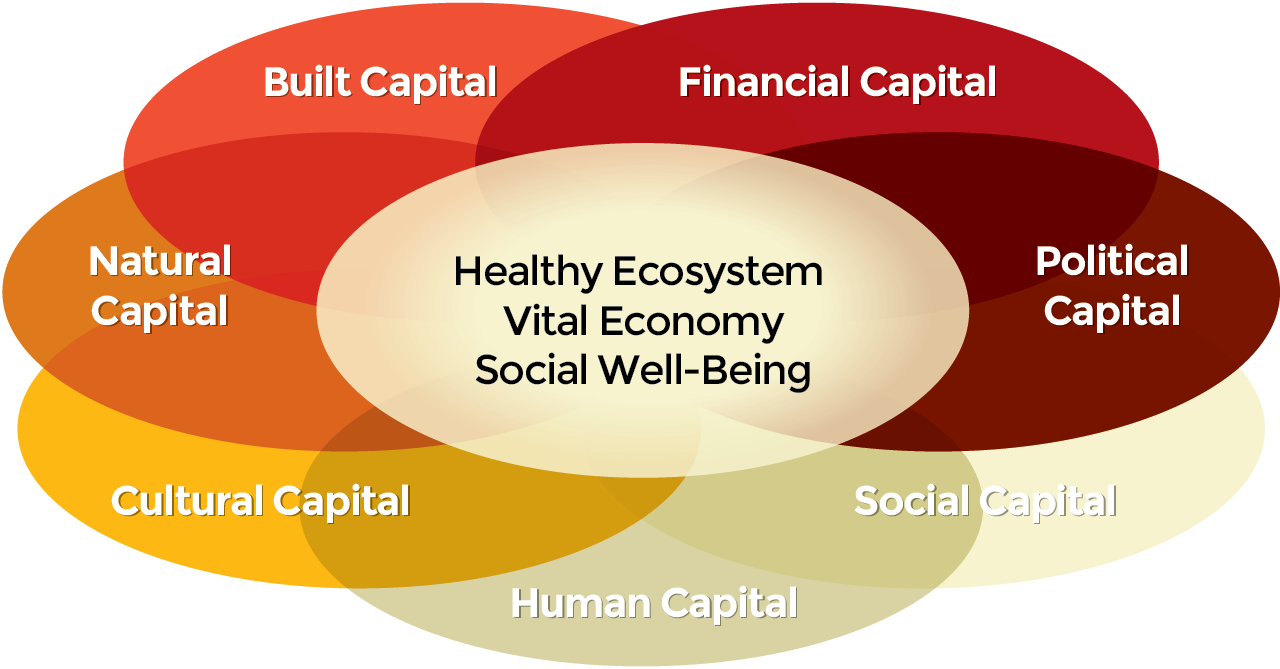
The Community Capitals Framework model* is the lens through which I see the assets of a community and, conversely, the deficits that may keep it from being healthy. There are seven community capitals:
Natural Capital—this includes a community’s resources, amenities, wildlife and natural beauty.
Cultural Capital—this might include ethnic festivals, multi-lingual populations or a strong work ethic. This community capital includes the dynamics of who I know and feel comfortable with, what heritages are valued and how I collaborate across races, ethnicities and generations. It informs what voices are heard and respected, and how creativity, innovation and influence emerge and are nurtured.
Human Capital—so important to the vitality of a community, this includes the skills and abilities of residents as well as the capacity to access outside resources and knowledge. Communities with strong human capital enjoy leaders with the ability to lead across differences and focus on assets; these critical influencers are inclusive, participatory and proactive in shaping the future of the community or group.
Social Capital—this is the glue in a community that makes things happen. It includes the close, or bonded, connections among people and organizations, and the bridges a community builds to strengthen weaker ties.
Political Capital—this is the ability of a community to influence standards, rules, regulations and their enforcement. Communities with high political capital have access to power and power brokers, including government officials and regional company decisionmakers.
Financial Capital—this capital includes the critical financial resources that allow a community to invest in capacity building, underwrite business development, support civic and social entrepreneurship and accumulate wealth for future development.
Built Capital—this includes the infrastructure that supports the community, including telecommunications, industrial parks, main streets, water and sewer systems, roads, etc. Built capital is often a focus of community development efforts.
*This model was developed by Jan and Cornelia Flora while in professorship in the College of Sociology at Iowa State University.
